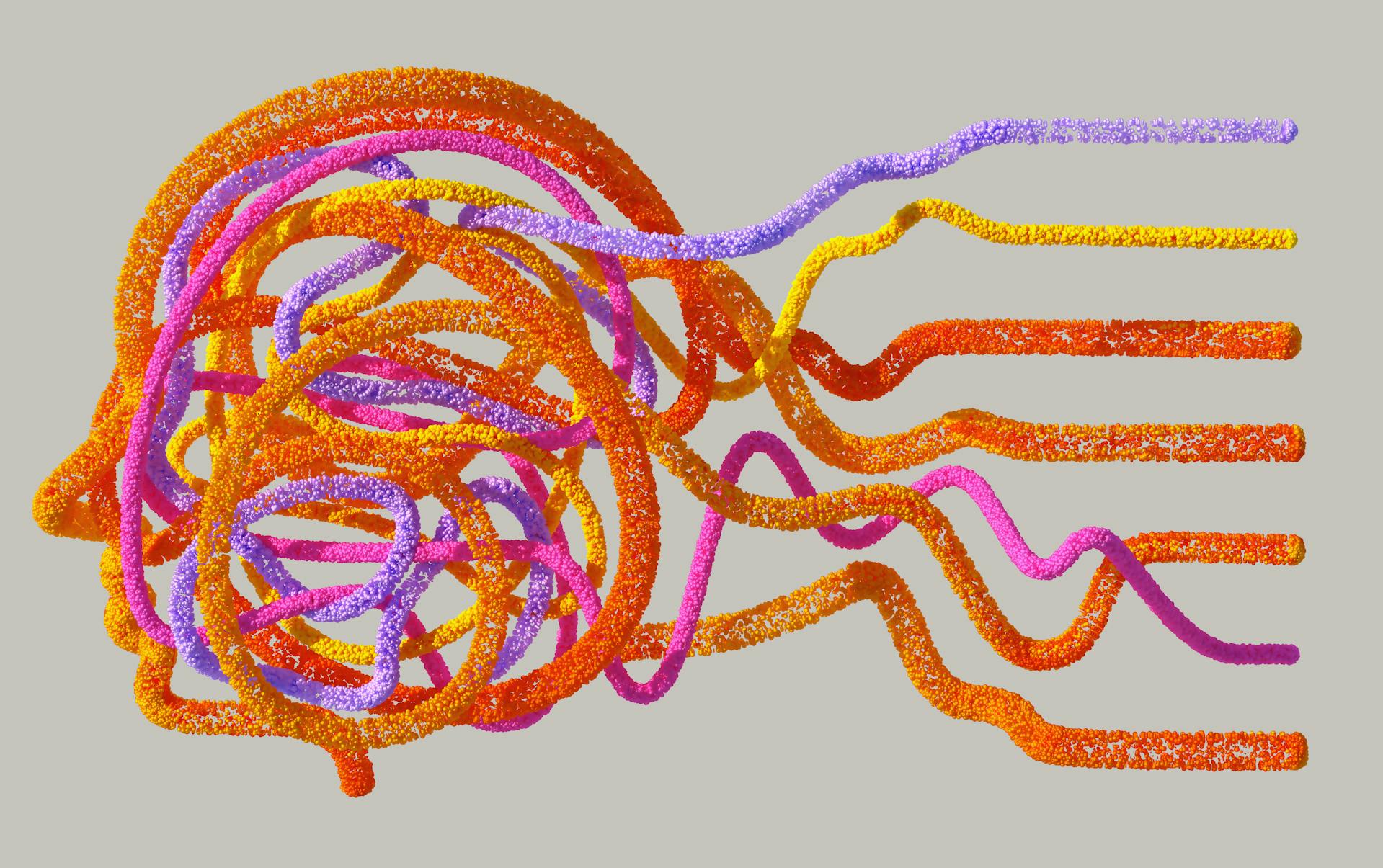What is cognitive science?
Published:
This is my first blog entry! I always thought I would write a book one day, but that seems a bit too much of an effort for me right now. Instead, blogging is a good way to get into writing and sharing my experience as I learn more about the brain and the mind.

Image by Google DeepMind from Pexel
To start this blog, I want to draw back to my interest in cognition, as it is my main academic interest. Coming from a background in psychology, I have learnt (among many things) different perspectives within psychology on how to study the mind. Some are left in the past and others are quite present in contemporary psychology.
I developed a particular interest in cognitive psychology, its theories, research and applications. But this is not about cognitive psychology, but rather a bigger and more complex field that studies cognition more integratively. The cognitive revolution that preceded the mid-20th century set the seeds for what is now known as cognitive science.
What is cognitive science?
I started to think of it as the study of the mind, its structures and its processes. I argue this falls short in two senses. Firstly, many areas already tap into cognition on their own means and techniques, independently of one another, cognitive psychology being a not-too-distant example, thus something needs to separate cognitive science from their compositing disciplines.
Secondly, one might assume it only studies the (human) mind, which I would strongly argue against. The mind is effectively at the centre of cognitive science, but I think a definition of the field should account for a broader set of cognitive systems that are not only tools for understanding the mind but objects of study themselves.
Getting the basics: what is the mind?
This could be a topic of another post, but to set some basic concepts, we can think of the mind as a information processor. This information is understood as representations of things, as queues of some nature that stand for something else —this is called the symbolic property—. The information would be mentally represented and would stand for stuff outside the mind (e.g. a tree) or even inside the mind (e.g. a dream or a thought). As the representations stand for something, they are directed to that something, and thus holding meaning.

Video by KATRIN BOLOVTSOVA from Pexels
There are different types of representations. Concepts are representations of elements (e.g. cats). Propositions establish relationships between concepts and hold the property of it being either true or false —aka factuality— (e.g. the cat is chunky). Rules are combinations of propositions, which can know interrelate complex relationships and represent procedural knowledge (e.g. if Mr Mittens is chunky, then he needs to do exercise and do a checkup with the veterinarian). Analogies are contrasts of a given experience with another one similar to it (e.g. Mr mittens is getting chunkier, just like your dog at the beginning of last year).
Computations, to keep it simple, refer to how information inputed into the system is manipulated to then produce an output, such as an observable behaviour or a thought. The extent or ways in which information is manipulated is subject to debate and there are different hypothesis about computational organization and components (like Marr’s proposal, which we will not cover in this post).
These principles of cognition can be studied at different levels, ranging from individual (e.g. episodic memory), to interpersonal (e.g. gender identity) and societal (e.g. religion or culture).
The disciplines within it
Regarding the composition of Cognitive Science (CogSci from now on), it is the intersection of different disciplines (e.g. psychology, neuroscience, sociology, computer science, mathematics, physics, philosophy, and linguistics) in the study of cognition. Whatever or however it studies cognition, it draws theory and techniques from different disciplines.
As these components interact to study the mind, theories and methods are structured and developed within the context of CogSci itself. Thus, even though it was composed of different professionals, the corpus of theories and practices grew independently, consolidating as an independent discipline.
A transversal principle of said collaboration is the use of the scientific method. In the process, from different disciplines, one could draw from theories, build hypotheses, execute experiments and contrast results to generate new insights.
For instance, one might take theories or conceptions chrome anthropological theories of cultural development of national identity, sociological propositions on social dynamics regarding nationalism, and socio-psychological constructs of interpersonal relations (to mention a few), to develop models (of many kinds) regarding reasoning about social interactions in which nationalism and a country’s culture is salient (e.g. a national football match).
This could be done as a way to explore cognitive phenomena, following the past example, maybe we would like to explore how the ways we process information could be marked by our culture (the anthropology part), and do this in an event in which individuals come together as behave homogeneously as a group more than individuals (the sociology part), to finally study the processing of information that occurs in our minds. Doing it this way, we could then compare according to different nationalities, as perhaps cultures modulate how we process information.
Its object of study: just the mind?

Image by Google DeepMind from Pexel
Attending to the second observation, what is it that CogSci studies? The cognitive revolution imported a paradigm of viewing the mind as an information processor. A cognitive system (like the mind), takes information, processes it and generates an output. Many things can happen in that information-processing step. There might be many steps, and goals that guide processes towards a type of output, even parallel processes we are not conscious of —maybe I’ll write something about connectionist models later—. To address our concern, let us note that information processing may be done by other systems, and this position even invites us to reflect on what makes a system a cognitive system.
Think of, for example, a computer, and generative AI model, or a bee. These are different entities that, in some way or the other, take inputs, process them and output results. Not that these are the same system, that would be an incorrect assertion. But in the same way, liquids are liquids despite their different chemical compositions, different cognitive systems may be composed differently from one another and still be subject to study.
Nonetheless, the (human) mind is still at the centre of CogSci —very anthropocentric—. Thus, many different phenomena interest us in the study of the mind —again, still do not feeling part of it, but hopefully one day—. Comprehending different and/or simpler cognitive systems may lead to a better understanding of more complex ones. We may further our understanding of the human mind to develop more accurate models of its functioning or to extend these models to AI such that the tasks we give to these algorithms are executed more efficiently.
My view
I like to view cognitive science as the study of cognitive systems, of which the human mind is one of them —very important and central, in fact—. Certainly, the human mind plays a central role in it, not only for the sake of explaining the inner world of us humans but also for the possible applications that comprehending such a complex processing system may lead to.
This study is guided by the scientific method, drawing from different perspectives to study a given aspect of cognition, and in this process, developing new theories and methods that account for a broader picture of cognition. This study is done with the goals of developing models that account for different levels of abstraction (e.g. Marr’s Tri-Level). The level of detail of said models can range from specific (e.g. models of recognition in episodic memory in a given task) to more integrative models (e.g. a general model for episodic memory recall). As these models can be expressed verbally, mathematical or by computational implementations, they strive for rigour in describing, relating, predicting or explaining cognition.
If you have any questions, corrections or suggestions for new entries to the blog, you can reach out to me :)
This post was an idea that came to me as I read Bermudez (2020) and Freidenberg et al. (2021), so make sure to look at them if you wanna learn more. Additionally, you might want to consult Sun (2023) if you want to get more information on computational modelling in cognitive science, or Leahey (2022) for a more philosophically focused text —this I haven’t fully read but seems interesting so far by just having looked superficially at their first chapter.
Some of the images I used where taken from Google Deepmind’s Visualizing AI initiative. I strongly suggest you have a look at them, it is a collection of how different artists and studios view AI —quite ironic they aren’t AI-generated.
References:
- Bermúdez, J. L. (2020). Cognitive Science: An Introduction to the Science of the Mind (3rd ed.). Cambridge University Press. https://doi.org/10.1017/9781108339216
- Friedenberg, J., Silverman, G., & Spivey, M. J. (2021). Cognitive Science: An Introduction to the Study of Mind (4th ed.). Sage Publications, Incorporated.
- Leahey, T.H. (2022). Fundamentals of Cognitive Science: Minds, Brain, Magic, and Evolution (1st ed.). Routledge. https://doi.org/10.4324/9780429322822
- Sun, R. (Ed.). (2023). The Cambridge Handbook of Computational Cognitive Sciences (2nd ed.). Cambridge University Press. https://doi.org/10.1017/9781108755610

Leave a Comment